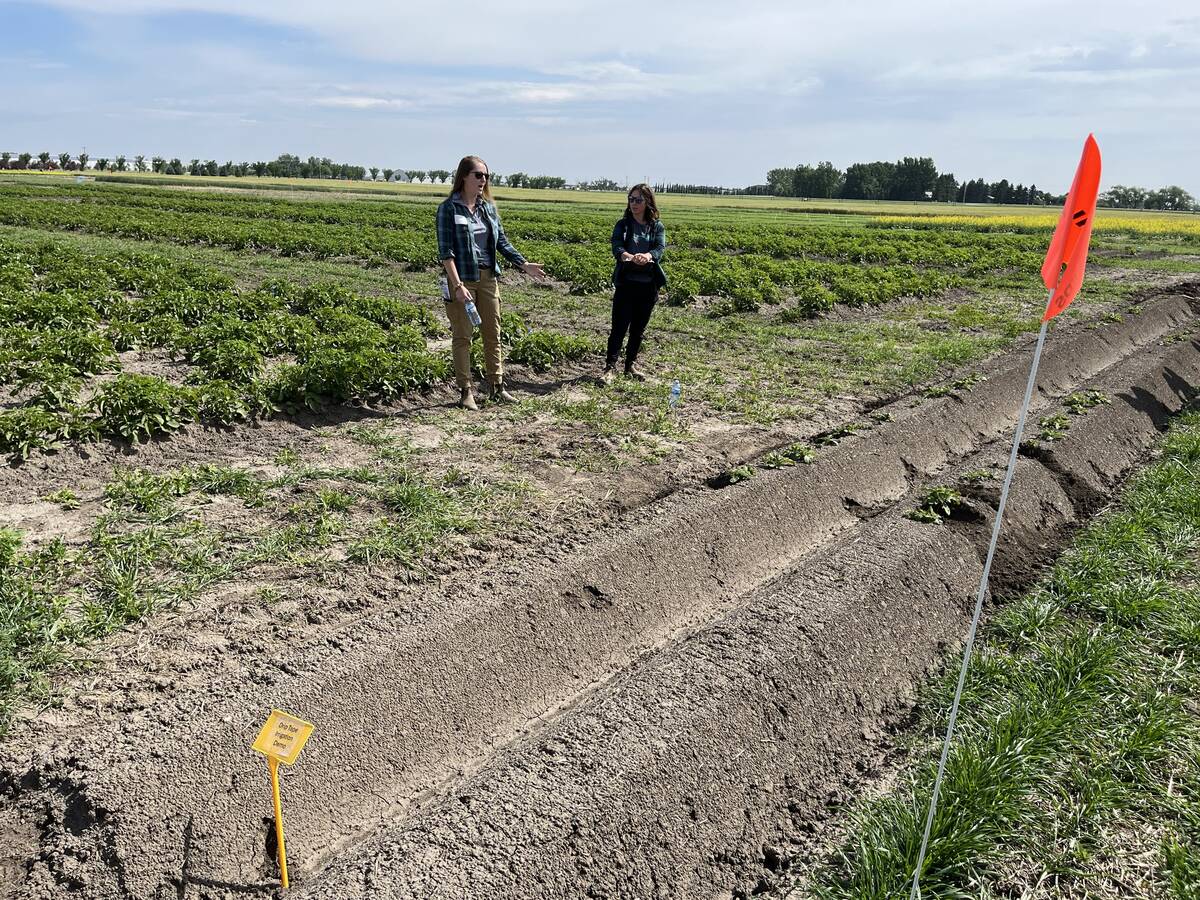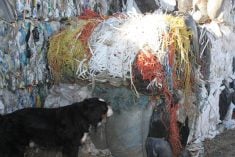The Farming Smarting Association near Lethbridge is in its relative infancy when it comes to potato research.
The potato industry is a huge economic driver of both the provincial and national economies, requiring a need for localized research into the unique land conditions of southern Alberta.
The group’s potato research is in its second growing season this year.
Read Also

Bunge’s crop mix is changing
Bunge has predominantly been a soybean processing firm, but that’s about to change after the merger with Viterra with softseed processing and grain merchandising gaining ground.
Alberta’s potato production contributes $2.87 billion to the Canadian economy and supports more than 7,000 full-time equivalent jobs in the province, according to a 2022 impact study by Potato Growers of Alberta.
“That amount of value for Alberta in this industry warrants some strong research,” Ashley Wagenaar, a conservation agronomist with Farming Smarter, said during the association’s recent two day field school in late June.
“As a very independent, unbiased research group, we have the land, the facility and the crop rotations and access to other sites and farms. We would be a good fit to work on this.”
However, with success also comes optic baggage, warranted or not. In the case of the potato industry, it has a reputation from some as a crop that ruins the soil.
“I think potato producers today, researchers and industry, we are trying to combat that perception,” said Wagenaar.
She highlighted a handful of potato research projects at the Farming Smarter site that are intended to show that potato producers take care of their soil.
One project involved water conservation using drip irrigation.
Farming Smarter’s potato hiller has the capacity to put in drip lines once the potatoes are planted. Future projects could include applying nutrients through the drip line and increasing water use efficiency.
This past growing season, the St. Mary River Irrigation District, the largest irrigation district in North America, allotted eight inches of water per acre, which is seen by many as insufficient for growing potatoes. It forced producers to adjust on the fly and move water around across their fields, perhaps under-irrigating their lower-value crops.
“Our irrigated systems, we are so fortunate to have our pivots, but what we have with pivots, we also have dryland corners and different water rights,” said Wagenaar.
Farming Smarter considered using drip irrigation to expand some of those irrigated areas without needing to install new pivots.
“It is done in many other areas that rely on specialty crops like B.C. and the big tomato industry in Ontario.”
Other Farming Smarter projects include a banding fertilizer trial, small plots using various tillage levels to possibly reduce passes in the field for residue management, and a four-year nutrient response study.
That study will use a nitrogen nutrient response curve, ranging from zero to more than the maximum recommendation. It is using the common RussetBurbank potato as a benchmark to compare it to new and emerging varieties.
Response curve research is being conducted in Idaho and Washington, and Farming Smarter wants to bring it closer to home using the variables that the crop encounters in southern Alberta, including weather and soil make-up.
Chip, fry, table and seed varieties are grown in Alberta, and sometimes they require different management practices.
“It’s a simple concept, and yet most of the research that we refer to even now is from the ’80s and the ’90s. It really hasn’t been developed, and so much as changed. We have new technology, different types of fertilizer and the varieties of our crops have changed,” said Wagenaar.
“To continue to develop, we need strong benchmarks and strong data in knowing how our crops respond to nutrients.”
Farming Smarter has been able to acquire new equipment to aid its potato research, helped by a $500,000 provincial grant. It supports the purchase of essential farm equipment such as seeders, swathers, tractors and portable research units.
Farming Smarter matched the grant with its own capital investments, looking to leverage it with other grants.















